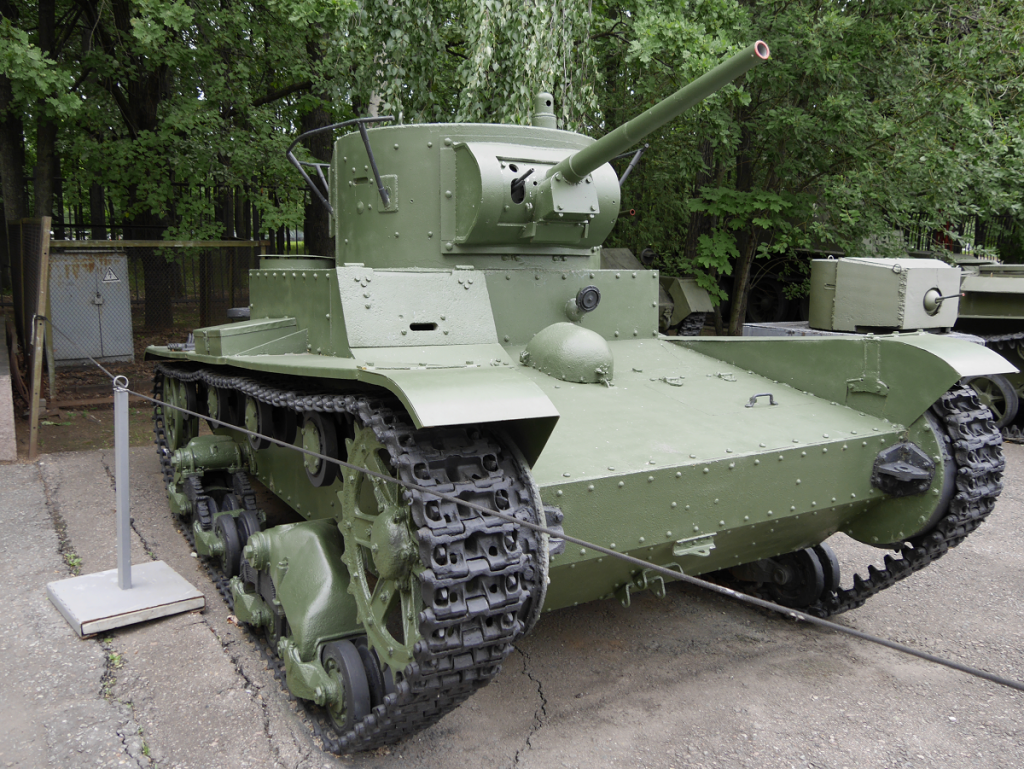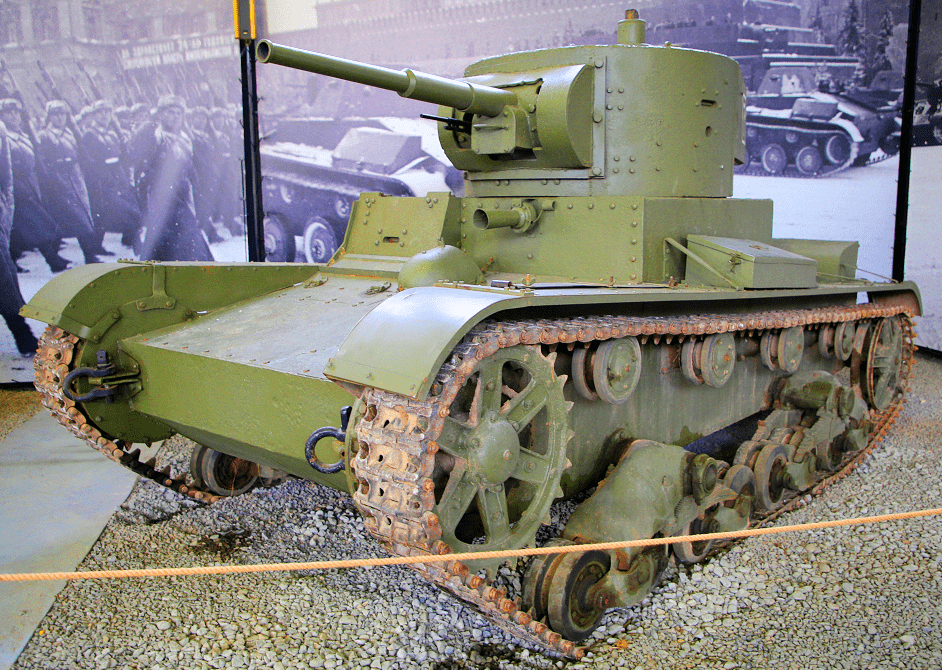T-26
The T-26 and BT-7 were the main tanks of the Red Army’s armoured forces during the interwar period. The T-26 was the most important tank of the Spanish Civil War and played a significant role during the Battle of Lake Khasan in 1938, as well as in the Winter War in 1939–40.
Though nearly obsolete by the beginning of World War II, the T-26 was the most numerous tank in the Red Army’s armoured force during the German invasion of the Soviet Union in June 1941. The T-26 fought the Germans and their allies during the Battle of Moscow in 1941–42, the Battle of Stalingrad and the Battle of the Caucasus in 1942–1943; some tank units of the Leningrad Front used their T-26s until 1944. Soviet T-26 light tanks last saw use in August 1945, during the defeat of the Japanese Kwantung Army in Manchuria.
Made in the USSR
Years of production: 1931-1941
Production: 10,300
Armour: 15 mm
Engine: 4 cylinders
Power: 82 HP
Max. speed: 52 km/h
Range: 230 km
Weight: 10280 kg
Armament: cannon M1932 20K (45 mm) + machine gun DT (7,62 mm)
Designer: Vickers-Armstrongs, OKMO of Bolshevik Plant in Leningrad
Manufacturer K.E. Voroshilov factory No. 174, Leningrad, Stalingrad Tractor Factory













